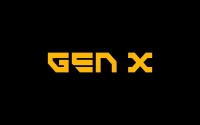The screen flickers. Green. A wash of optimistic emerald painting the pre-market futures. You could almost feel the collective exhale across Wall Street to kick off the week. After a string of record highs, the S&P 500, the Nasdaq, the Dow—they were all coiled springs, ready to leap higher. The mood was electric, fueled by two powerful currents: the near-certainty of a Fed rate cut and the impending earnings reports from the titans of our age, the Magnificent Seven. It was a mood perfectly captured by one headline: SPX: S&P 500 Futures Turn Green as Traders Eye Big Week of Tech Earnings, Fed Update.
It felt, for a moment, like the old rulebook still applied. Good inflation data comes in, the Fed eases up, and the market sings. It’s a familiar dance, one we’ve seen for decades. But as the week unfolded, I couldn't shake the feeling that we were all watching a magic trick, focusing on the waving hand of the Federal Reserve while the real miracle was happening somewhere else entirely. We were measuring the breeze while a hurricane was forming just over the horizon.
This entire week was a fantastic, chaotic microcosm of the new economy we’re hurtling into. On one side, you have the institutions of the 20th century—central banks and geopolitical handshakes—trying to steer the ship with familiar rudders. On the other, you have a handful of technology companies that aren’t just on the ship; they are building a fleet of entirely new vessels, powered by engines we’re only just beginning to understand. And the market, bless its heart, is trying to use a horse-and-buggy roadmap to navigate a world of hyperloops.
The Ghosts in the Machine
Let's start with the old ghosts, the forces that used to be the only story that mattered. The week began with traders pricing in a Fed rate cut as a done deal. The September inflation number came in just a hair cooler than expected, and that was all the permission the market needed to assume the taps would be loosened. This is classic cause-and-effect economics—in simpler terms, the idea that when the economy looks a bit shaky, the central bank makes borrowing money cheaper to encourage growth. It’s the financial equivalent of a parent giving a kid some juice after they’ve scraped their knee.
Then came the meeting between President Trump and China’s Xi Jinping. The world held its breath, waiting for a grand bargain, a definitive end to the trade tensions. What we got was… fine. A small cut in tariffs for a pause on rare earth curbs. It was a truce, not a peace treaty. The market, which had been hoping for a blockbuster, just sort of shrugged. The muted reaction was captured by reports that the Stock market today: Dow, S&P 500, Nasdaq futures hit pause after Trump-Xi talks with Big Tech earnings ahead.
And then, the real gut punch from the old world. Fed Chair Jerome Powell stood at the podium after delivering the expected quarter-point rate cut and essentially poured cold water on the party. He stressed that another cut in December was "not a foregone conclusion — far from it." You could almost hear the screech of tires. The futures market, which had been so certain, so giddy, suddenly hit pause. Why the hesitation? What are Powell and the other policymakers so divided about? Are they looking at the same booming tech sector we are and seeing something fundamentally unstable, or are they simply unable to comprehend the sheer velocity of the change happening under their feet?
This is where the old model breaks down. The market’s reaction to Powell and the Trump-Xi talks is like a seismograph picking up minor tremors from a nearby construction site and logging them as the main event. It’s accurately measuring the rumbling, but it’s completely missing the tectonic plate shifting miles below the surface—a shift so profound it’s about to redraw the entire map.

The Architects of Tomorrow
While the world was parsing every syllable from Jerome Powell, the real story was being written in quarterly earnings calls. This is where the future is being priced, not in hundredths of a percentage point from the Fed, but in the multi-billion-dollar bets being placed by the Magnificent Seven. And what a beautifully chaotic, telling picture it was.
Alphabet soared over 7%. Why? Because its core business is a fortress, and its investments in AI are clearly starting to look less like science projects and more like the foundation of the next trillion dollars of value. But then you see Meta sink almost 8% and Microsoft slip 3%. When I saw the market punish Meta for its outlook, I honestly just sat back in my chair and shook my head. Investors were spooked by the spending, the sheer scale of the investment in a future that isn't here yet. This is the kind of short-term thinking that completely misses the paradigm shift unfolding before our very eyes.
What we are witnessing is the collision of two timelines. The market is still operating on a quarterly-results, next-rate-hike timeline. But these companies? They’re operating on a decade-long, civilization-altering timeline. The gap between what a company like Meta or Nvidia is building and what the market can currently comprehend is becoming a chasm—and that chasm is where the noise, the volatility, and the opportunity all live. The speed of the underlying technological progress is just staggering—it means the gap between what is possible today and what will be commonplace tomorrow is closing faster than our financial models can possibly keep up with.
Look beyond the Mag 7 and you see the same pattern. Qualcomm surges over 11% on new AI chips. Nvidia, the undisputed king of the AI hardware revolution, climbs another 2%. This isn’t just about software or social networks anymore. This is the bedrock. This is the silicon and the code that will power everything for the next fifty years. It’s the 21st-century equivalent of discovering oil, inventing the printing press, and harnessing electricity all in the same decade.
Of course, with this kind of power comes immense responsibility. We have to ask ourselves what it means for society when a handful of companies hold the keys to a technological revolution this profound. That’s a conversation we must have. But to ignore the revolution itself because we’re scared of the quarterly numbers is like refusing to look through Galileo's telescope because you’re worried it might challenge your comfortable view of the universe. What future are we choosing if we let fear of the unknown dictate our investment in tomorrow?
The Signal Through the Noise
So, what are we to make of this dizzying week? The futures jump, they pause, they dip. The Fed giveth, the Fed taketh away. A presidential handshake moves billions. It’s all noise. It’s the static of an old world struggling to understand the broadcast signal of a new one.
For decades, we’ve been taught to watch the bankers, the politicians, and the diplomats for clues about the future. But the real clues aren’t in Washington or at international summits anymore. They’re in the data centers, the R&D labs, and the earnings calls of the companies that are actively building the next reality. The most important economic indicator is no longer the Consumer Price Index; it’s the pace of innovation. The real question isn’t what the Fed will do in December. The real question is, are you paying attention to the architects of tomorrow, or are you still listening to the ghosts of yesterday?









